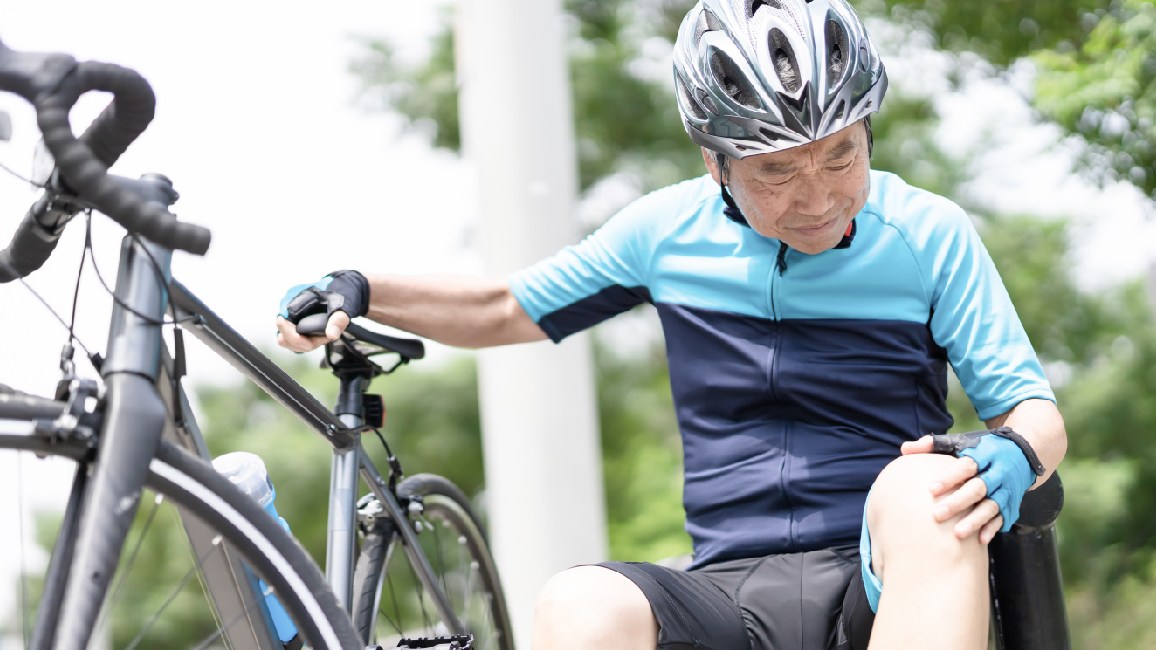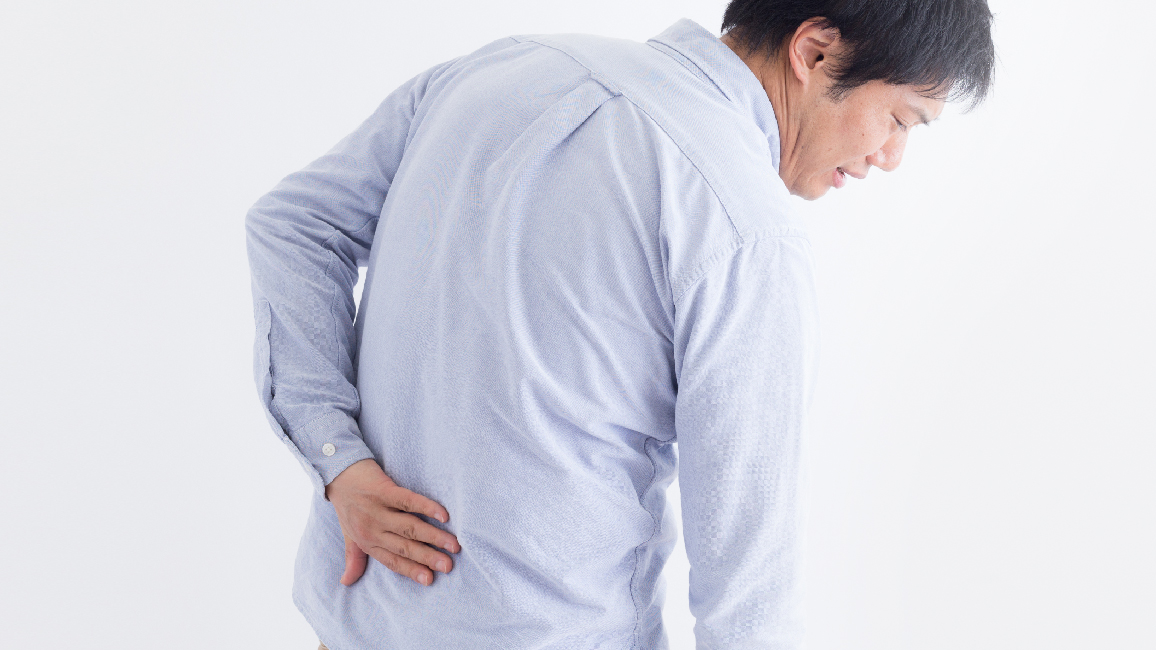Shoulder stiffness in the elderly Problems affecting quality of life
Center : Orthopedics Center
Article by : Dr. Nithiwut Pinsiranon

Shoulder stiffness in the elderly - Even if it's not a serious disease, But it is a huge obstacle to daily life. The way to spot symptoms is to have pain every time you move your arm. Unable to reach out to something or unable to fully lift. Weakness while lifting or turning the shoulder blades, can't reach to unzip the back of the shirt. If the elderly have these symptoms or either you suspect that you may be suffering from a stuck shoulder which is a very common problem in the elderly.
How is shoulder stiffness in the elderly?
Frozen shoulder is a condition that causes shoulder pain and inability to move the shoulder joint to the extreme. Either move it yourself or let someone else help you move it. Caused by inflammation and thickening of the membrane make joint movement less for a long time, such as sitting for a long time typing or a posture that moves the shoulder joint repeatedly causing friction and inflammation of the tendons and muscles around the shoulder, deterioration from overuse including increasing age with degeneration of the muscles and ligaments of the shoulder joints.
Shoulder stiffness can occur spontaneously or caused by minor injuries such as being hit, in addition to being common in the elderly and those with low mobility, such as bedridden patients Shoulder stiffness is also common in people with diabetes, thyroid, and lung disorders such as tuberculosis or pulmonary spots.
There are 3 stages of shoulder stiffness symptoms:
- In the pain phase, the patient will feel that the pain gradually increases with movement. The pain is so intense at night that it interferes with sleep. Joint mobility will gradually decreased.
- In the pain phase, the patient will feel that the pain gradually increases with movement. The pain is so intense at night that it interferes with sleep. Joint mobility will gradually decreased.
- In the pain phase, the patient will feel that the pain gradually increases with movement. The pain is so intense at night that it interferes with sleep. Joint mobility will gradually decreased.
However, shoulder stiffness can only occur on one side or both. But it is often the dominant arm. If left for a long time may develop into stiff shoulders and unable to move his arms freely permanently until the need for surgery to expand the shoulder bag for the arm to return to normal functioning.
Check the risk... Stuck in the shoulder.
If anyone has pain from doing so. should see a doctor immediately.
- Can't reach the back of the stuff unable to cross arms backwards.
- Unable to reach out to reach something that is tall or unable to fully lift.
- Reach for the zipper on the back of the shirt or unable to wear an underwear
- It's hard to reach into the back pocket of your pants.
- Unable to forcefully push the door open.
- Difficult to raise your arms to wash your hair.
- Can't raise his arms to put clothes on his head.
- There is a pain in the upper arm. Carrying heavy objects is difficult to handle.
Can an elderly person stop or adjust the dose of medication on their own?
Elderly people should not stop taking the medications or adjust the dosage of the medications without doctor orders. Because it may increase the risk of side effects from the drug reduce the effectiveness of the drug until the treatment is ineffective. It affects the health of the elderly, such as taking antihypertensive drugs that continue to be taken until they can control blood pressure levels. If the medications are stopped abruptly, it can cause a dangerous rise in blood pressure. Therefore, the dosage should not be adjusted or discontinued without consulting a doctor.
Examination and treatment of a frozen shoulder
Doctors can diagnose by taking a history and physical examination. Including additional examinations such as X-ray (X-Ray), magnetic resonance imaging (MRI), ultrasound examination to exclude other diseases as appropriate for each patient.
In the treatment of stuck shoulder joints- The doctor will provide supportive treatment according to the stage of the disease to help most patients get better. The goal is to reduce pain increase the range of motion and returning to use the shoulder joint in daily activities as follows:
- Pain phase Treatment focuses on reducing pain and inflammation. May provide pain relievers and anti-inflammatory.
- In the stuck period , treatment will focus on increasing the joint range. Patients can exercise themselves by stretching and bending the shoulder joints every day. Before bending the shoulder joint, compress it with a heating pad. After bending the shoulder joint, a cooling pad may be applied to prevent inflammation. If it doesn't improve, you may consider physical therapy using various heating devices and bending the shoulder joint by a physical therapist to help normalize the condition faster.
- The recovery phase focuses on exercises to strengthen the muscles around the shoulder joint.
Stuck shoulder Treatment with endoscopic surgery technology
If palliative treatment does not improve and the cause of the condition can be corrected with surgery. The doctor will consider recommending shoulder arthroscopy. By using a shoulder laparoscopy, the surgery involves drilling 3-4 holes in the shoulder, approximately 0.5 - 1 cm each, to insert tools. A camera about 4 mm in size that will bring the image inside the joint to be displayed on the screen while the doctor operates with specialized tools.
Advantages of shoulder arthroscopy surgery This allows the pathology in the joints to be clearly seen and the pathology can be corrected well, the wound is small, tissues and muscles around joints are less injured than open surgery. This makes the patient less pain after surgery. Can perform physical activity faster, helps to recover faster and reduces the length of hospital stay.
Stuck shoulder can heal If when treatment is done from the onset of symptoms, yes in the early stages and be able to return to daily life happier and can do various activities. Especially the issue of raising the shoulders, bathing, eating. or putting on your own clothes clearly increase the quality of life for the elderly
Consult Online
Article of Orthopedics Center






